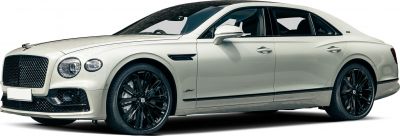 1983 Mercury Grand Marquis I Dimensions, Size & Specs
1983 Mercury Grand Marquis I Dimensions, Size & SpecsMeasurements of the 1983 Mercury Grand Marquis I, engineered for optimal performance and comfort
| Dimensions | |
|---|---|
| Length: | 5245 mm206.5 in17.2 ft |
| Width: | 1970 mm77.6 in6.5 ft |
| Height: | 1410 mm55.5 in4.6 ft |
| Weight Specifications | |
| Curb Weight: | 1745 kg3847 lbs |
The Mercury Grand Marquis I, produced from 1983 to 1991, represents a classic full-size American sedan known for its substantial road presence and spacious interior. Measuring 5245 mm (206.5 inches) in length, 1970 mm (77.6 inches) in width, and standing at 1410 mm (55.5 inches) tall, this generation of the Grand Marquis offers a broad and commanding stance on the road. The vehicle’s curb weight is approximately 1745 kg (3,847 lbs), reflecting its robust body-on-frame construction typical of American sedans from this era. These dimensions contribute to a comfortable ride with generous passenger space and ample trunk capacity, which made it a popular choice for buyers seeking both luxury and practicality in the 1980s and early 1990s. The Grand Marquis I retains classic styling cues with its elongated profile and wide stance, affirming its position in Mercury’s lineup as a premium full-sized sedan designed for comfort, stability, and traditional American automotive appeal.
Discover the standout features that make the 1983 Mercury Grand Marquis I a leader in its class
Have a question? Please check our knowledgebase first.
The Mercury Grand Marquis I generation, produced from 1983 to 1991, is a full-size sedan with a length of 5245 mm (206.5 inches), a width of 1970 mm (77.6 inches), and a height of 1410 mm (55.5 inches). These dimensions reflect the car's large and spacious design, characteristic of American luxury sedans of the era, designed to provide ample interior space for passengers and a comfortable ride.
The curb weight of the Mercury Grand Marquis I generation is approximately 1745 kg (3849 lbs). This substantial weight contributes to the car's solid and stable feel on the road, enhancing ride comfort and handling smoothness typical for full-size sedans of the time. However, the heavier weight can also influence fuel economy and acceleration, making its performance more leisurely compared to lighter, more compact cars.
Most standard garages are designed to accommodate vehicles around 2.4 to 2.7 meters (8 to 9 feet) wide and 4.9 to 5.5 meters (16 to 18 feet) long. With the Mercury Grand Marquis I's width of 1970 mm (77.6 inches or approximately 6.5 feet) and length of 5245 mm (206.5 inches or about 17.2 feet), it typically fits comfortably within a standard garage width-wise. Length-wise, it is towards the upper end but still generally fits in a typical single-car garage. Owners with smaller or older garages should verify clearance to ensure easy parking and door operation.
The Grand Marquis I's width of 1970 mm (77.6 inches) is quite representative of American full-size sedans from the 1980s, which tended to be wide for interior spaciousness and road presence. Compared to competitors like the Chevrolet Caprice or Ford Crown Victoria of the same era, the Grand Marquis falls within a similar width range, often slightly wider than some mid-size sedans but standard for its class. This width contributes to roomy interiors but may require more parking space.
The Mercury Grand Marquis I stands at 1410 mm (55.5 inches) tall, which is relatively low compared to some contemporary SUVs or minivans but typical for sedans of that period. This lower height helps improve aerodynamic efficiency compared to taller vehicles, potentially aiding fuel economy at highway speeds. Despite the relatively low roofline, the Grand Marquis' design maximizes interior headroom and passenger comfort with a roomy cabin and carefully engineered seating.
While specific interior volume figures vary between model years and trim levels, the Mercury Grand Marquis I's generous exterior dimensions translate to a spacious interior cabin. Typically, it comfortably seats five passengers with ample front and rear legroom and headroom. The full-size sedan layout emphasizes passenger comfort, with wide seating surfaces and large door openings for easy access. The large trunk capacity also supports practical storage needs.
Since the Mercury Grand Marquis I debuted in 1983 as the first generation of this specific Grand Marquis nameplate, it effectively replaced the Mercury Marquis. Compared to late models of that Marquis predecessor, the Grand Marquis I saw slight dimensional increases in length, solidifying its status as a flagship full-size sedan. At 5245 mm (206.5 inches) long, the Grand Marquis I is on the longer side, offering improved passenger space and presence on the road compared to earlier Mercury sedans.
The Mercury Grand Marquis I shares much of its platform and mechanicals with the Ford Crown Victoria, as both cars were built on the Panther platform. However, the Grand Marquis typically featured more upscale trim, distinct styling details, and additional luxury-oriented features. Dimensionally, they are very similar, with the Grand Marquis I sometimes slightly wider or differently weighted due to added luxury appointments. Overall, the Grand Marquis targets buyers seeking more refinement while benefiting from the Crown Victoria's proven underpinnings.
The 1983-1991 Mercury Grand Marquis I measures 1970 mm (77.6 inches) in width and 1410 mm (55.5 inches) in height. Compared to modern full-size sedans, it is somewhat wider but lower in height than many contemporary vehicles, especially SUVs and crossovers which tend to be taller. The Grand Marquis’ width reflects the design priorities of the 1980s towards spaciousness and road presence, while its lower height contributes to a sleeker profile compared to today's often taller and more aerodynamically complex designs.
With a length over 5.2 meters (about 17.2 feet) and width close to 2 meters (6.5 feet), the Mercury Grand Marquis I is a sizeable vehicle that may pose challenges in tight urban parking spaces or narrow streets. Its length especially requires drivers to be mindful when parking in standard spaces or maneuvering in congested areas. However, the car's design prioritizes comfort and stability over tight maneuverability, making it better suited for highway cruising and spacious suburban or rural environments rather than dense city driving.
Discover similar sized cars.

| Production: | 2024-present |
|---|---|
| Model Year: | 2025 |
| Length: | 5316 mm209.3 in |
| Width: | 2187-2220 mm86.1-87.4 in |
| Height: | 1474 mm58.0 in |
